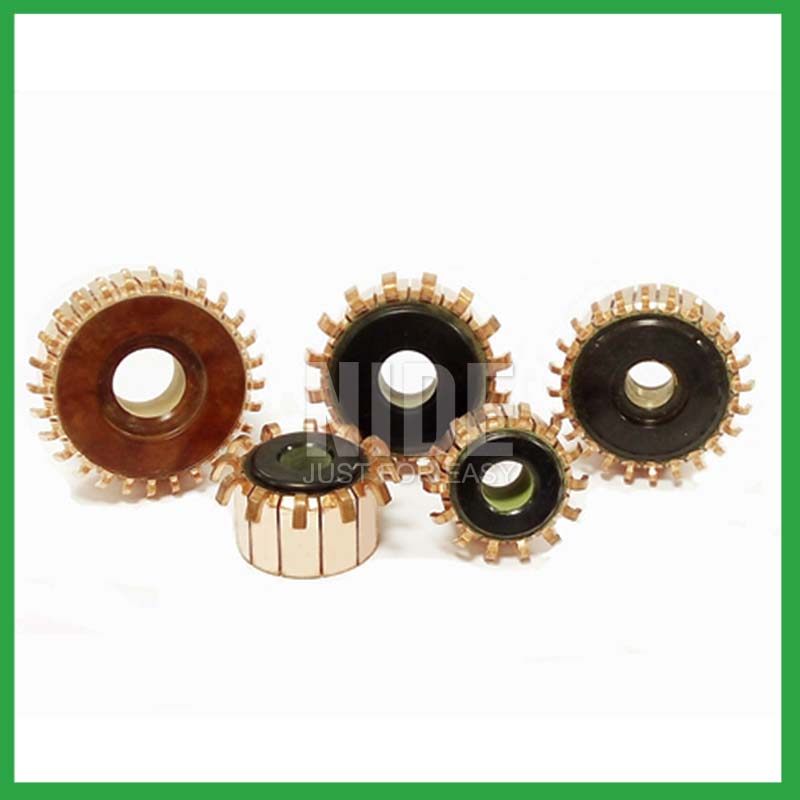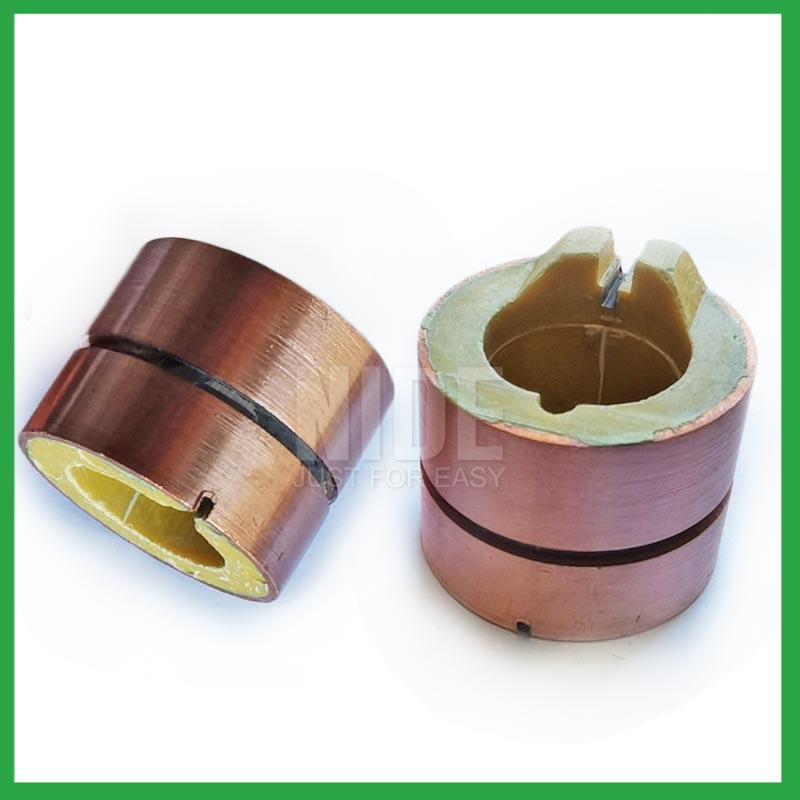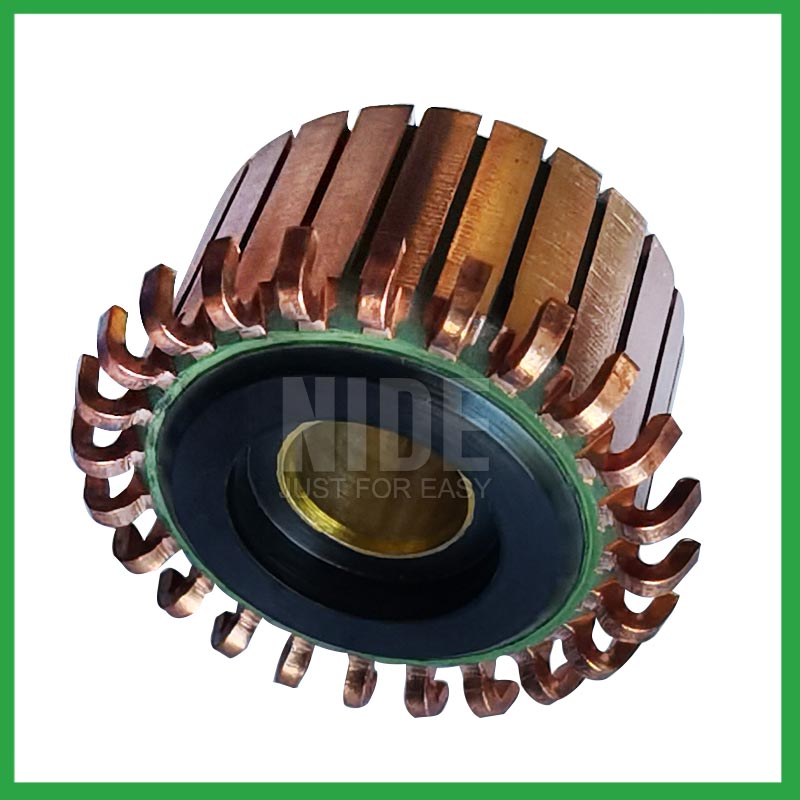2024-08-26
In the realm of electrical motors and generators, commutators and slip rings are essential components that play crucial roles in ensuring the functionality and efficiency of the machines. While both serve the purpose of facilitating electrical connections in rotating systems, they are designed for different applications and operate under distinct principles. Understanding the differences between motor commutators and slip rings is key to selecting the right component for your specific needs. Nide International, a leader in motor and generator components, provides high-quality commutators and slip rings tailored to a wide range of industrial applications. In this article, we will compare motor commutators and slip rings, discussing their functions, applications, and how they contribute to the performance of rotating electrical machines.
A commutator is a mechanical switch used in direct current (DC) motors and generators to reverse the direction of current flow through the windings, ensuring that the torque generated by the motor remains in a consistent direction. The commutator consists of a cylindrical assembly made up of multiple segments of conductive material, usually copper, mounted on the rotor shaft. Brushes, typically made of carbon, maintain contact with the rotating commutator, allowing electrical current to pass through.
Motor commutators are primarily used in DC machines, including DC motors and some types of DC generators. They are essential for maintaining unidirectional torque, which is crucial for the consistent operation of DC motors. Nide International offers commutators designed for various applications, from small electric tools to large industrial machines. Our commutators are engineered to provide reliable performance, with a focus on durability and efficient current transfer.
High Efficiency
Nide International’s commutators are designed to minimize electrical resistance and maximize the efficiency of the motor. For example, our ND-C200 series commutators feature low-resistance copper segments that reduce energy losses, enhancing the overall efficiency of the motor.
Durability
The ND-C200 series is also built to withstand high operational stresses, with a design that reduces wear on both the commutator segments and the brushes. This leads to longer service life and lower maintenance requirements.

A slip ring, also known as a rotary electrical joint, is a device used to transmit electrical power and signals from a stationary part to a rotating part in an AC machine, such as an AC motor or generator. Unlike commutators, slip rings do not reverse the current direction. Instead, they provide a continuous electrical connection to the rotating part of the machine. Slip rings consist of a ring of conductive material mounted on the rotor shaft, with brushes that make sliding contact as the rotor turns.
Slip rings are used in a variety of AC applications, including wind turbines, cranes, and radar systems, where it is necessary to transfer electrical power or signals to a rotating component. Nide International’s slip rings are designed for high reliability and minimal electrical noise, ensuring smooth operation in demanding environments.
High Reliability
The NSR-300 series slip rings from Nide International are built to provide consistent performance with minimal maintenance. They feature a robust design that ensures reliable contact even under harsh operating conditions.
Versatility
Our NSR-300 series can handle a wide range of current and voltage requirements, making them suitable for both low-power and high-power applications. For example, the NSR-350 model can handle currents up to 1000A, making it ideal for heavy-duty industrial applications.

While both commutators and slip rings serve the purpose of maintaining electrical connections in rotating systems, their applications and operational principles differ significantly:
Functionality
Commutators are used to reverse the direction of current in DC motors, ensuring unidirectional torque. Slip rings, on the other hand, provide a continuous electrical connection in AC machines without reversing the current.
Applications
Commutators are typically used in DC machines, while slip rings are used in AC machines and other applications where a continuous electrical connection to a rotating part is required.
Design
Commutators consist of segmented copper rings that reverse current flow, whereas slip rings are continuous rings that allow for the smooth transfer of power or signals.
At Nide International, we understand the unique requirements of different industrial applications. Our commutators and slip rings are designed with precision to meet the specific needs of our clients, ensuring optimal performance and reliability.
The key difference lies in their function: a commutator is used in DC motors to reverse the direction of current and maintain consistent torque, while a slip ring is used in AC machines to provide a continuous electrical connection without altering the current’s direction.
Yes, Nide International offers customizable commutators to meet specific application requirements. Our engineers work closely with clients to design commutators that provide the best performance for their particular needs.
Nide International’s slip rings, such as the NSR-300 series, are designed for minimal maintenance. However, regular inspection and cleaning of the contact surfaces are recommended to ensure long-term reliability and performance.

In conclusion, both motor commutators and slip rings are critical components in rotating electrical machines, each serving specific functions in different types of motors and generators. By understanding their differences and applications, and by choosing high-quality components from Nide International, you can ensure that your machines operate efficiently and reliably, meeting the demands of today’s industrial environments.
Products: Plane Mixer motor Commutator , Automobile Generator copper slip ring commutator